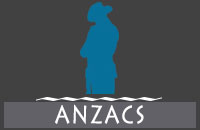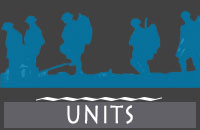The Crete campaign, code named ‘Operation Mercury’ or ‘Merkur’ by the Germans, was ferocious and lasted ten days, from 20th to 30th May 1941. Unlike the campaign on the Greek mainland, the Allies outnumbered the Germans on Crete, having deployed 31,200 troops to the island, in addition to the 25,000 soldiers sent by the Greeks and the original garrison of 5,300 troops stationed on the island, bringing the total to 61,800. The Germans however had only sent 23,000 troops, mainly paratroopers to Crete, having underestimated the strength of their opponents. They had also misread the response of the local people and were surprised by the fierce resistance of the Cretans, who used any means at their disposal to defend their island from the invaders.
The Battle of Greece
The Greek campaign, codenamed ‘Operation Marita’ by the Germans, commenced on 6 April 1941, when the Germans simultaneously attacked Greece through Bulgaria and Yugoslavia in a pincer movement designed to encircle the Greek troops fighting the Italians on the Albanian front, as a result of Italy’s declaration of war on Greece on 28 October 1940.
Naval Battle of Matapan. 29 March 1941
The Battle of Matapan took place o the Western coast of Crete on 29th March 1941 and involved the Australian ships HMAS Perth and HMAS Stuart .Under the command of Vice Admiral Pridham-Wippell, the cruisers HMAS Perth, HMS Orion, HMS Aajax, and HMS Gloucester, then patrolling in the Aegean Sea, was ordered to a point off Gavdos Island south of Crete to protect troop convoys bound for Greece, from attacks by the Italian Navy.
Naval Battle of Cape Spada. 19 July 1940
On 18 July 1940, HMAS Sydney captained by John Collins sailed from Alexandria in company with the destroyer HMS Havock bound for the Gulf of Athens. Together they had orders to support an allied flotilla consisting of HMS Hyperion, Hero, Hasty and Ilex in the Aegean Sea. They were to intercept any Italian shipping sailing east to west along the north coast of the island of Crete.
Subcategories
CEMETERIES & MEMORIALS
MILESTONES INDEX
1899 - 1902 • 1912–1913 • 1914-1918 • 1915 • 1916 • 1917 • 1918 • 1922 • 1927 • 1932 • 1934 • The Battle Of Greece • The Battle of Crete • Naval Battle of Matapan • Naval Battle of Cape Spada • 1942 • 1943 • 1945 • 1946–1971 • 1947-1948 • 1950–1952 • 1950–1955 Korean War • 1952 Anzac Day • 1962-1972 Vietnam War • 1965 • 1970 • 1975 • 1977 • 1978 • 1979 • 1980 • 1983 • 1984 • 1985 • 1988 • 1991 • 1992-2001 • 1994 • 2001 • 2007 • 2008 • 2010 • 2011 • 2013 • 2014 • 2015









